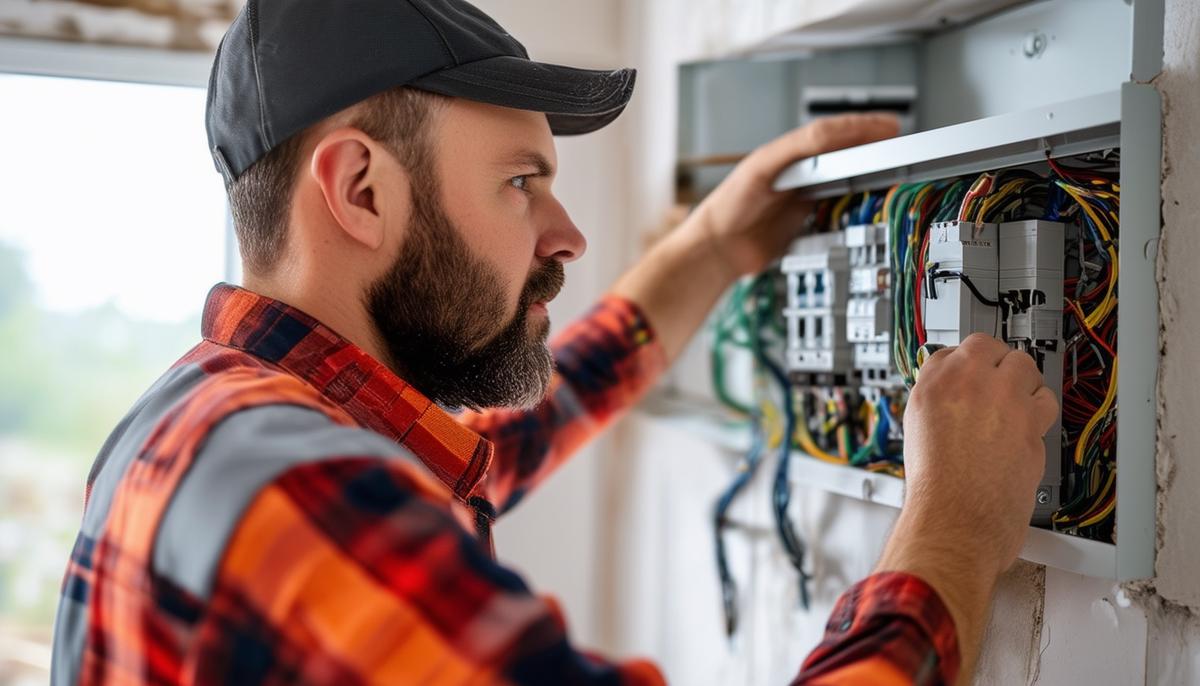Clean the New House
Before you carry in the first box, it's time to give your new home a thorough cleaning. Even if the previous owners were tidy, a top-to-bottom scrub is essential.
Floors
Start with the floors. Use a mop or steam cleaner for hard surfaces and a vacuum with a deep-cleaning attachment for carpets.
Walls
Walls can accumulate grime over time. Pay special attention to kitchen and bathroom walls. A mild detergent and soft sponge should do the trick. For stubborn marks, try a magic eraser.
Cabinets
Clean inside kitchen cabinets with soapy water and a sponge. Dish soap works well here. For the outside, use a cleaning spray and cloth.
Bathrooms
Scrub tubs, sinks, and toilets with a powerful cleaner. Don't forget grout lines and shower tiles where mold and mildew can hide. A cleaner with bleach can help sanitize.
Kitchen
Thoroughly clean appliances inside and out, including the refrigerator, oven, microwave, and dishwasher. Use a degreaser for the stovetop and a vinegar solution for the microwave.
Windows
Clean windows can brighten up a room. Use a glass cleaner or vinegar-water solution on panes and sills.
Consider Professional Help
If you're feeling overwhelmed, consider hiring a professional cleaning service. They can handle the heavy lifting and ensure everything is spotless before you move in.
Starting with a clean slate gives you peace of mind and transforms your new space into a home fit for a fresh start.

Inspect and Test Essentials
Before settling in, it's crucial to inspect and test the essential systems in your new home. This ensures everything is functioning properly and helps you address any issues early.
- Plumbing: Turn on each faucet to check for leaks or weak water pressure. Flush all toilets to ensure they're working correctly. Look for any drips or wet spots under sinks.
- Electrical: Locate the circuit breaker box. Each switch should be labeled correctly. Test them by turning them off and on to see what they control. If you find any inaccuracies or malfunctioning switches, consider calling an electrician.
- Safety Devices: Test all smoke detectors and carbon monoxide detectors by pressing their test buttons. Replace any dead batteries or faulty units immediately.
- Outlets and Appliances: Check that all electrical outlets are working by plugging in a simple device like a phone charger. Don't forget to test light switches, ceiling fans, and included appliances like the oven, refrigerator, and dishwasher.
Document any issues you find with photos, videos, or detailed notes. Present these findings to the seller, landlord, or property manager as soon as possible. It's easier to negotiate fixes before you're fully moved in.
While this process might not be as exciting as planning your housewarming party, it's a crucial step in ensuring your new home is safe and fully functional.

Transfer Utilities and Change Address
Managing utilities and updating your address are essential tasks when moving. Here's what you need to do:
- Contact utility providers (gas, electricity, water, internet) to schedule service transfers. Do this a week or two in advance to ensure everything's set up for move-in day.
- If you have a security system, arrange for its transfer or installation at your new home.
- File a change-of-address form with the USPS. This can be done online and ensures your mail gets forwarded to your new address.
- Update your address with banks, credit card companies, and subscription services. Don't forget about auto-billing accounts like insurance or loans.
- Inform the DMV about your move. You'll need to update your driver's license and vehicle registration, typically within 30 days of moving.
Taking care of these tasks promptly helps avoid missed bills, service interruptions, and other logistical headaches. It's a bit of work upfront, but it'll make your transition much smoother in the long run.

Unpack and Organize
Now that you're in your new home, it's time to unpack and organize. This process can be both exciting and overwhelming, but with a good strategy, you can make it manageable and even enjoyable.
Start with the Essentials
Unpack your toiletries and bathroom necessities first. Next, set up your kitchen basics – pots, pans, utensils, and small appliances like the coffee maker and microwave.
Set Up Necessary Furniture
Once the basics are covered, move on to setting up necessary furniture. Assemble beds and arrange living room furniture to create functional spaces.
Have a Plan for Unpacking
Prioritize essential rooms like the bathroom, kitchen, and bedroom. Leave non-essential spaces for later. As you unpack, use labels or sticky notes to organize items by room or category. This makes finding things easier later on.
"Remember to break down empty boxes as you go. This prevents your new home from becoming a cardboard maze."
Take your time with the process. Set small, achievable goals each day and don't forget to take breaks. The journey from house to home is gradual, so be patient with yourself.
With a bit of effort and organization, you'll soon transform your new space into a cozy, well-organized home. Happy unpacking!

- United States Postal Service. Change of Address. 2023.
- American Moving and Storage Association. Moving Tips and Checklists. 2023.
- Environmental Protection Agency. A Brief Guide to Mold, Moisture, and Your Home. 2022.

